
I started astrophotography in 2012 with an Orion 80ED 600mm f/7.5 refracting telescope, an equatorial Orion Atlas EQ-G Go-to mount, and a Canon 500D camera.
I quickly switched to a larger 10″ Newtonian telescope, the Orion 254/1200mm f4.7, and built a little observatory in the garden to house this equipment.
Since I have been away most of the time for my studies and work, I also quickly began to develop different systems to use the observatory remotely.
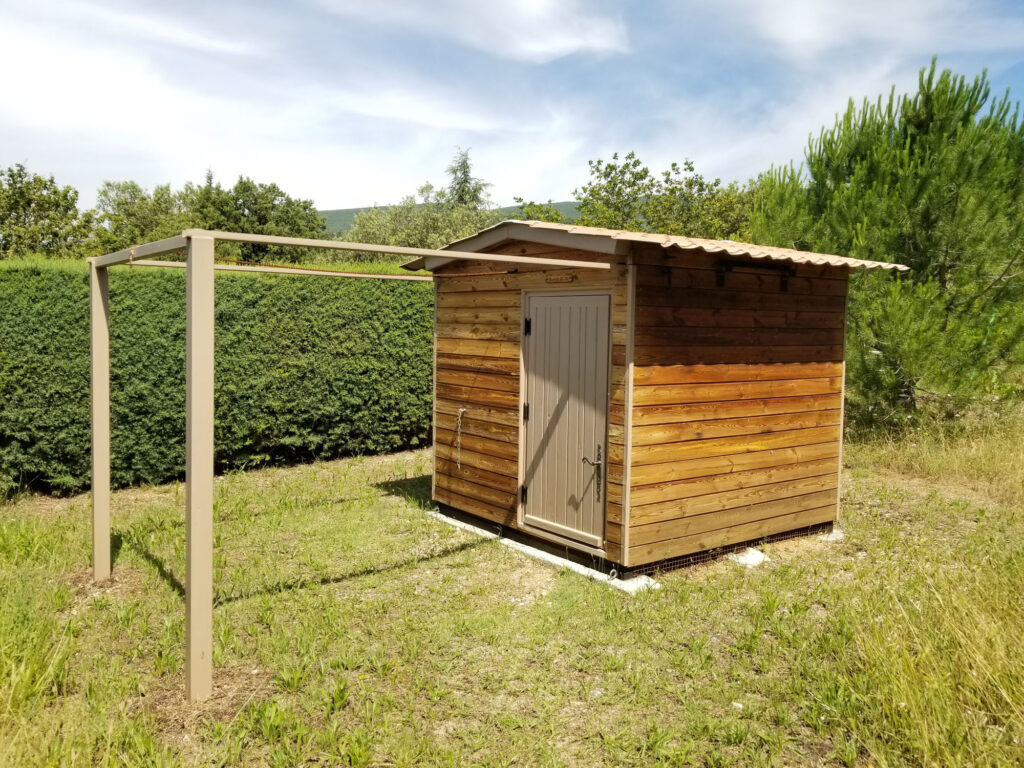
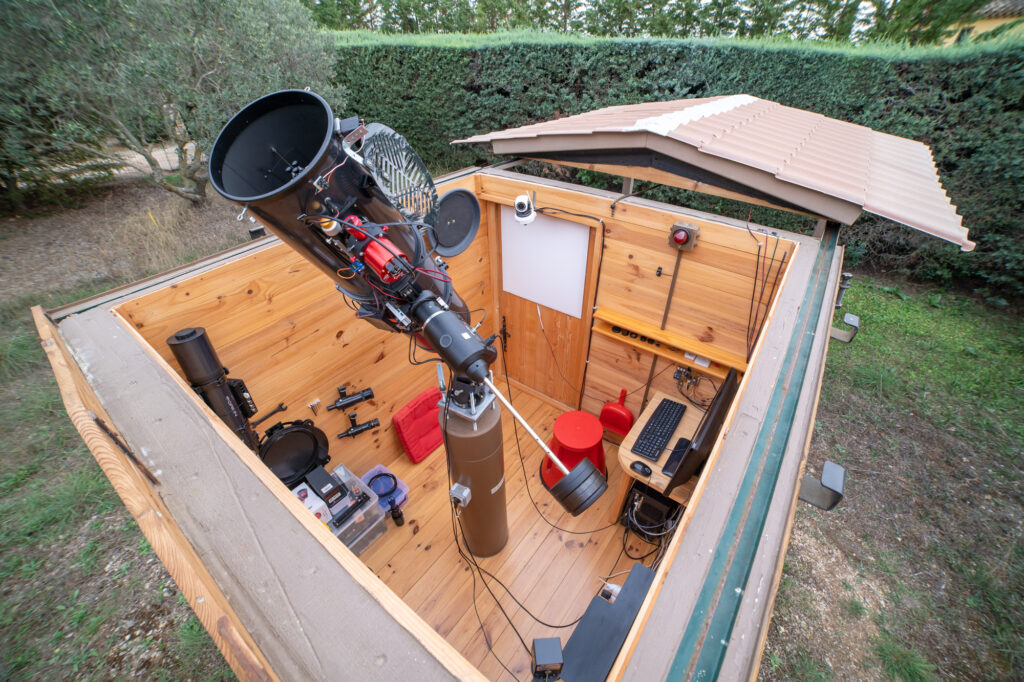
The observatory relies on 3 different main parts :
• Raspberry Pi
To start a night of remote observations, I first connect to a Raspberry Pi located in the observatory.
Thanks to a custom printed circuit board (PCB) and some relays mounted on the micro computer, I can remotely start the main computer and the main power of the observatory.
The Raspberry Pi is also hosting a meteo station and an allsky camera. I have information on the wind level, the temperature, humidity, and the possibility to see the cloud coverage in real time (meteo station page).


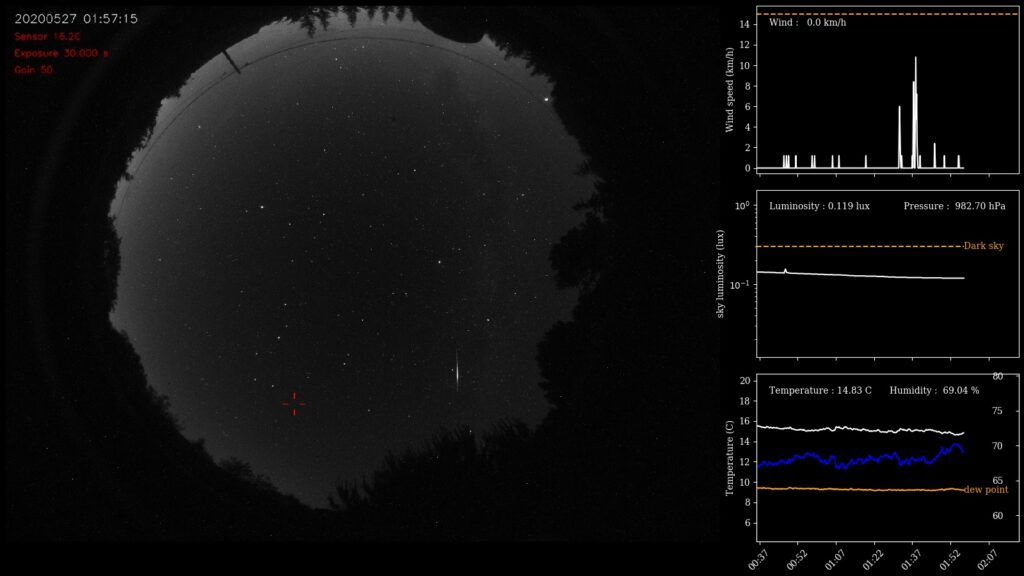
• Main observatory controls
Once the main computer is started and appears online, I take control of it using a remote desktop client such as TeamViewer or AnyDesk.
Thanks to a second custom printed circuit board, I can open the roof of the observatory, open the telescope cap, and make sure that everything is going smoothly with a variety of sensors.

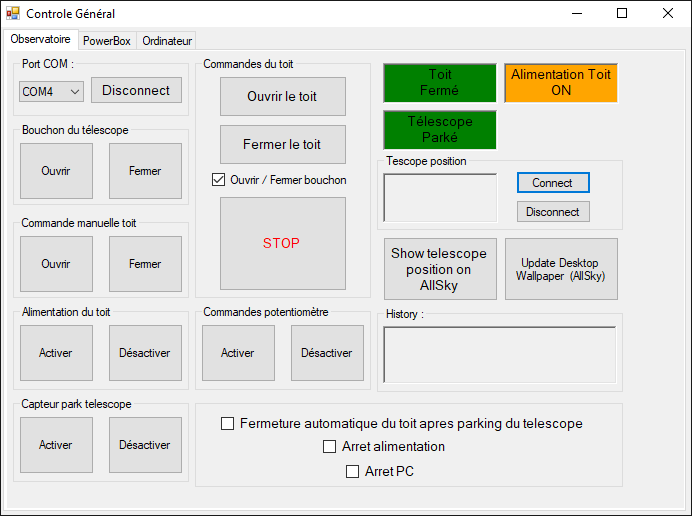
• Home-made Powerbox
To allow a full remote control of my telescope, even thousands of kilometers away, I designed and improved over the years my own Powerbox to fulfill all my specific needs.
The custom Powerbox is attached on the side of the telescope and allows to control all the different devices from a program on the main computer :
It powers the mount and the main camera cooling Peltier, it controls the focusing stepper motor, allows to move the bahtinov mask in front of the aperture, powers the secondary mirror dew heater, allows to move the flip mirror to switch between the large field deep sky camera and the planetary camera, and gives information on the humidity/temperature conditions.
Thus, a single USB cable and a single 12V power cable are attached to the moving part of the telescope, improving a lot the reliability of the complete system over the months of remote use.
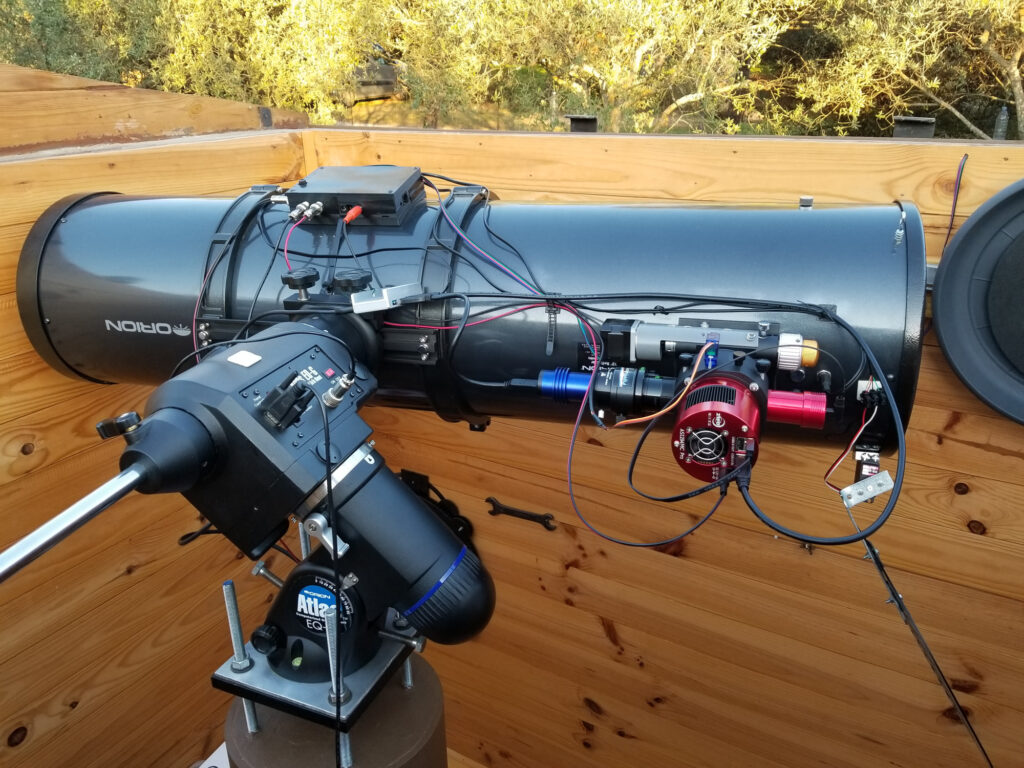
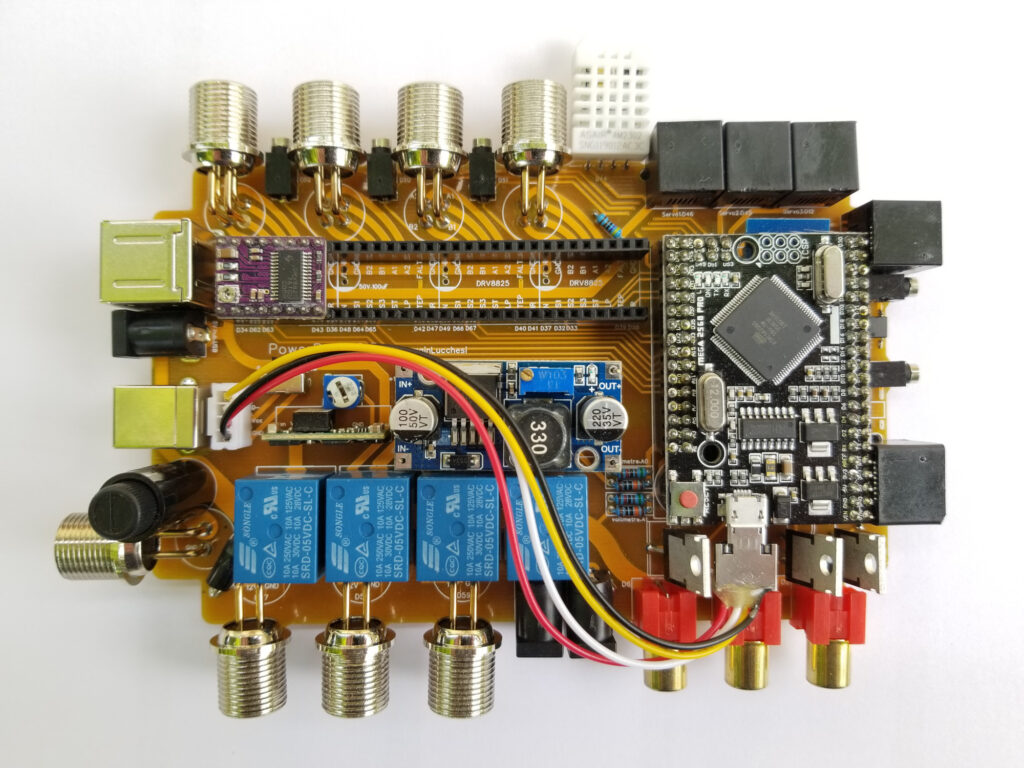

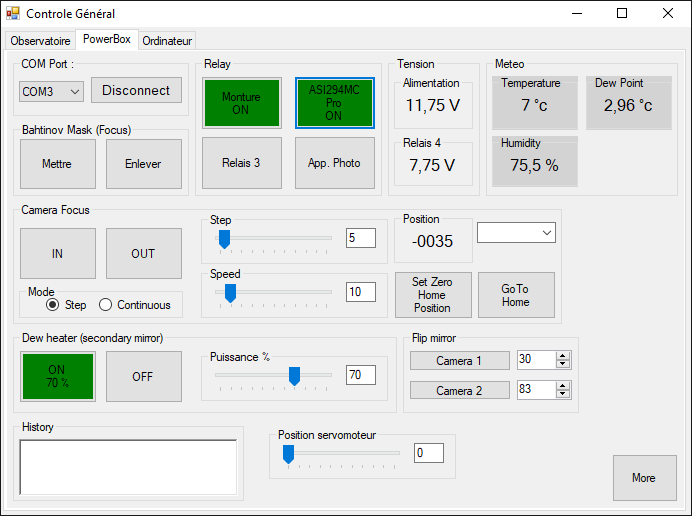
Several iterations of the Printed Circuit Board (PCB) were designed over the years in order to include as many options, and make it as flexible as possible for future developments of the equipment.
The Powerbox provides the possibility to control up to :
• 4 stepper motors
• 3 relays with 12V power
• 2 relays with 7.5V power
• 3 servo motors
• 3 dew heaters with 0 to 12V adjustable power
• 2 USB 5V power outputs
• 2 contacts to trigger 2 DSLR cameras
• 1 temperature / humidity sensor
• 1 Bluetooth module
• 3 contact sensors (limit switches)
• Fuse protected
In this video we can see how observations can be started remotely in less than 10 minutes :